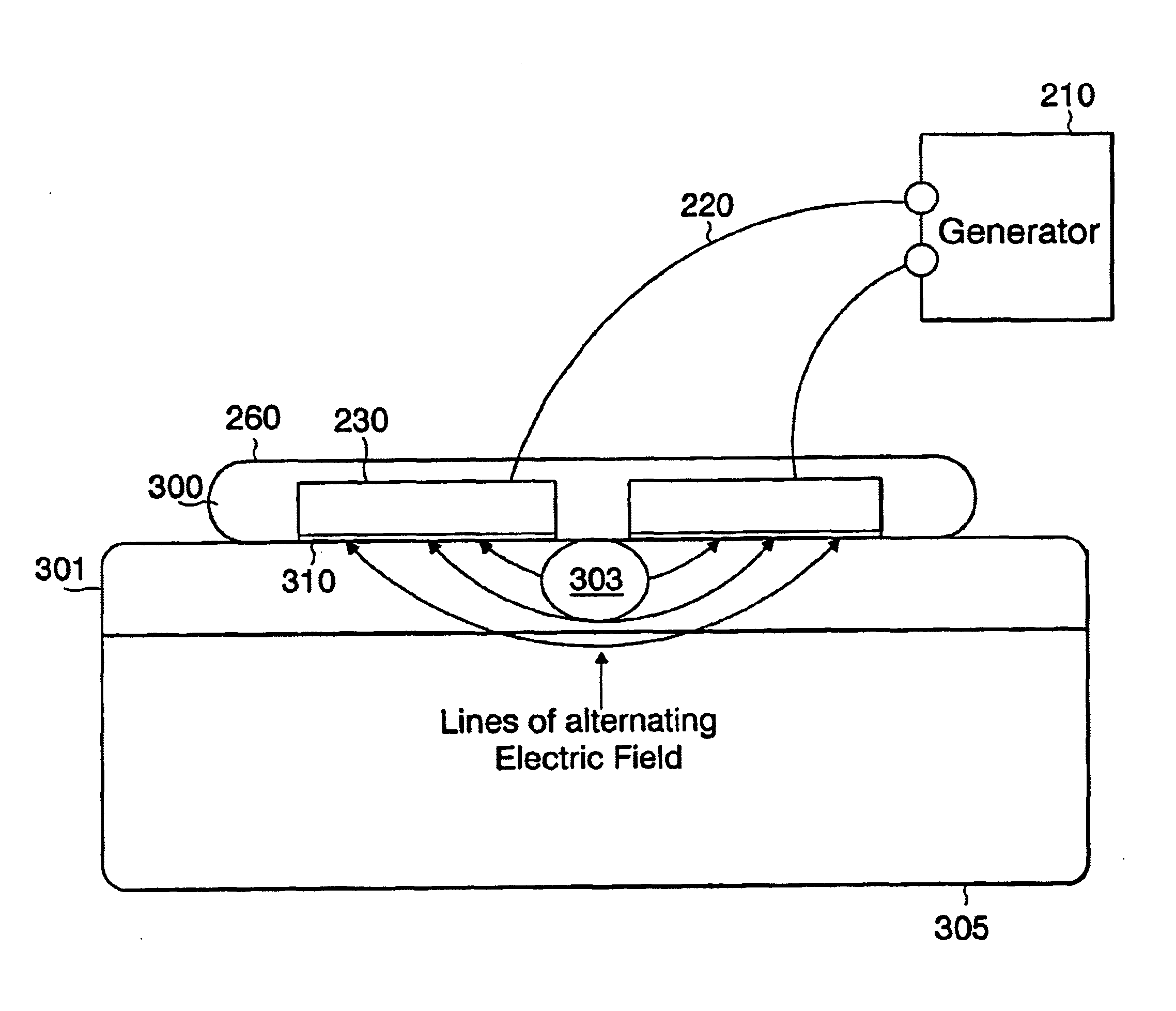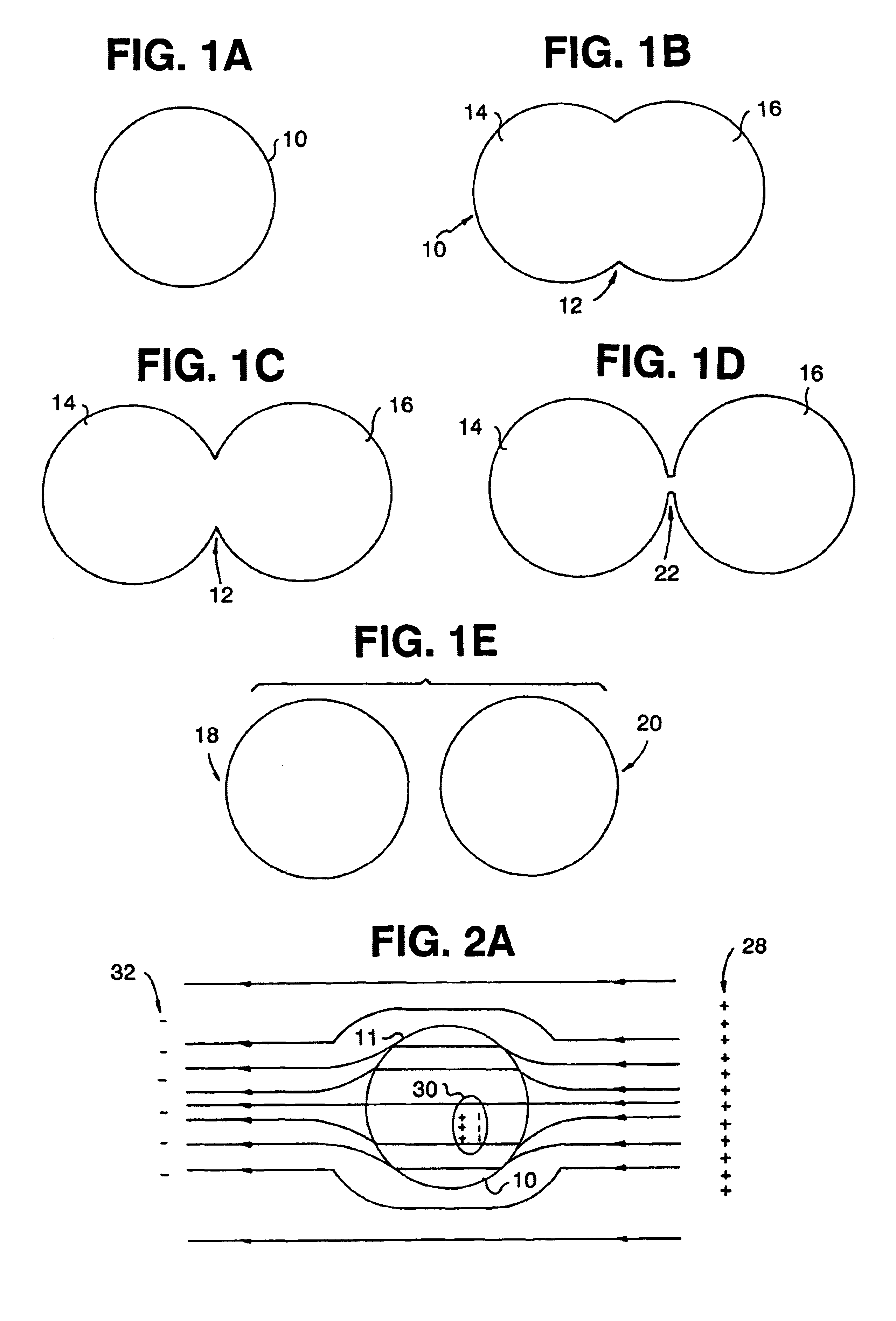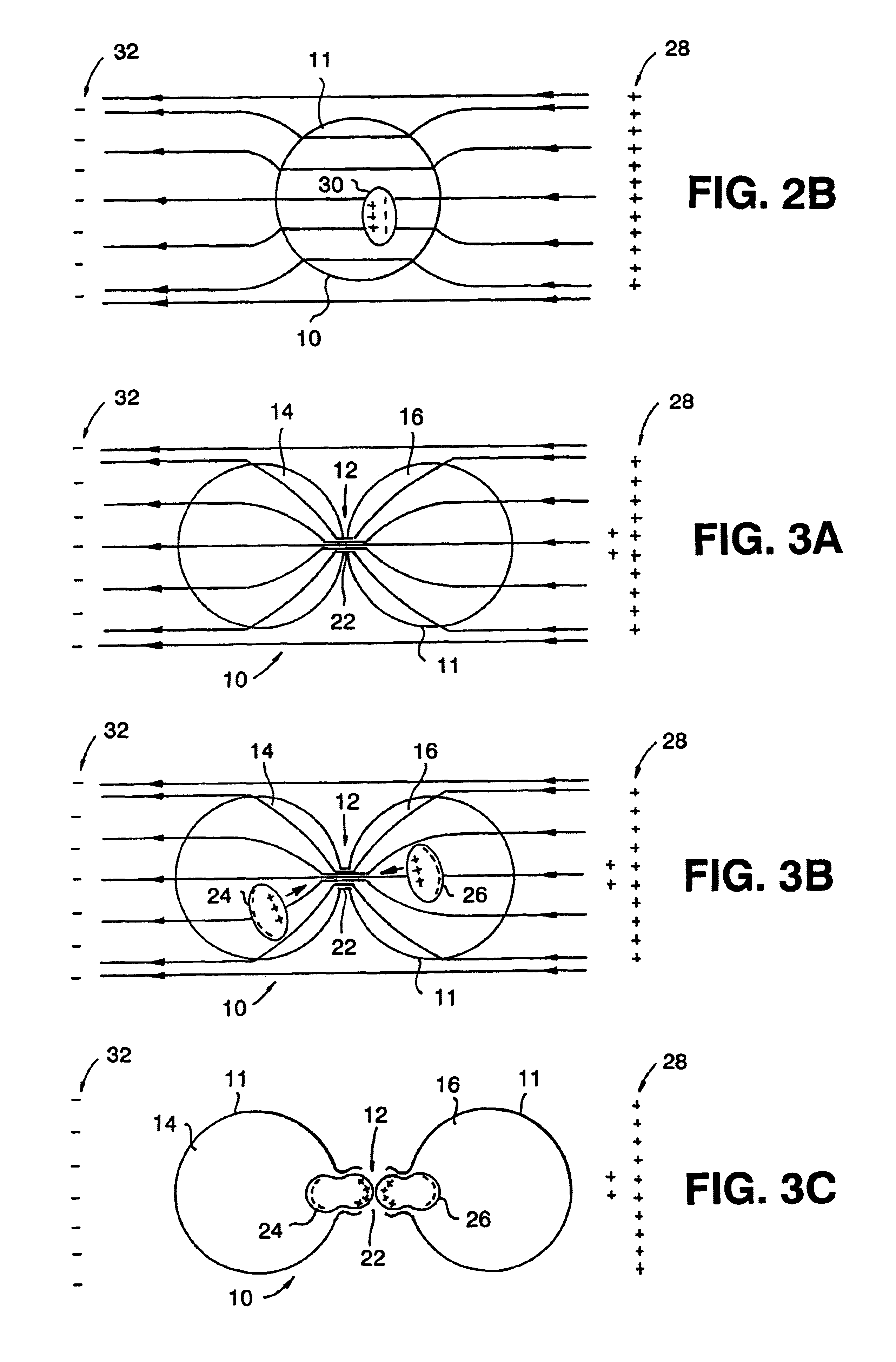Apparatus for treating a tumor or the like and articles incorporating the apparatus for treatment of the tumor
a tumor and apparatus technology, applied in the field of tumor apparatus for treatment, can solve the problems of limiting the therapeutic effect of such treatments, reducing the ability to distinguish between tumor cells and normal cells, and not being able to achieve meaningful stimulatory effects
- Summary
- Abstract
- Description
- Claims
- Application Information
AI Technical Summary
Benefits of technology
Problems solved by technology
Method used
Image
Examples
example
To demonstrate the effectiveness of electric fields having the above described properties (e.g., frequencies between 50 KHz and 500 KHz) in destroying tumor cells, the electric fields were applied to treat mice with malignant melanoma tumors. Two pairs of isolects 230 were positioned over a corresponding pair of malignant melanomas. Only one pair was connected to the generator 210 and 200 KHz alternating electric fields (TC fields) were applied to the tumor for a period of 6 days. One melanoma tumor was not treated so as to permit a comparison between the treated tumor and the non-treated tumor. After treatment for 6 days, the pigmented melanoma tumor remained clearly visible in the non-treated side of the mouse, while, in contrast, no tumor is seen on the treated side of the mouse. The only areas that were visible discernable on the skin were the marks that represented the points of insertion of the isolects 230. The fact that the tumor was eliminated at the treated side was furthe...
PUM
 Login to View More
Login to View More Abstract
Description
Claims
Application Information
 Login to View More
Login to View More - R&D
- Intellectual Property
- Life Sciences
- Materials
- Tech Scout
- Unparalleled Data Quality
- Higher Quality Content
- 60% Fewer Hallucinations
Browse by: Latest US Patents, China's latest patents, Technical Efficacy Thesaurus, Application Domain, Technology Topic, Popular Technical Reports.
© 2025 PatSnap. All rights reserved.Legal|Privacy policy|Modern Slavery Act Transparency Statement|Sitemap|About US| Contact US: help@patsnap.com



